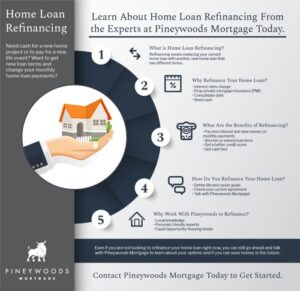
Green building certifications for commercial properties play a pivotal role in the current real estate landscape, reflecting a commitment to sustainability and environmental responsibility. These certifications not only enhance the marketability of properties but also signify a tangible investment in energy efficiency and reduced environmental impact.
With programs like LEED and BREEAM leading the charge, understanding the criteria and processes involved in obtaining these certifications is essential for property owners and investors alike. As the demand for sustainable solutions continues to rise, these certifications are becoming a key factor in shaping the future of commercial real estate.
Understanding Green Building Certifications
Green building certifications play a crucial role in the sustainability movement, particularly for commercial properties. These certifications not only demonstrate a commitment to environmental stewardship but also enhance property value, reduce operational costs, and improve tenant satisfaction. In a competitive market, having a recognized green certification can set a property apart, attracting eco-conscious tenants and buyers alike.Several certification programs have emerged globally, establishing standards for sustainable building practices.
Among the most recognized are LEED (Leadership in Energy and Environmental Design) and BREEAM (Building Research Establishment Environmental Assessment Method). Each of these programs provides a framework for assessing the environmental performance of buildings and promoting sustainable development.
Key Green Building Certification Programs
Understanding the key features of prominent green building certification programs is vital for property developers and owners looking to achieve sustainability goals. Here’s a closer look at two of the most established programs:
- LEED (Leadership in Energy and Environmental Design): Developed by the U.S. Green Building Council, LEED is one of the leading global standards for green building certification. It evaluates buildings based on various criteria, including energy efficiency, water usage, materials selection, and indoor environmental quality. Achieving LEED certification requires a rigorous application process that includes documentation of the building’s sustainable practices and performance.
- BREEAM (Building Research Establishment Environmental Assessment Method): Originating in the UK, BREEAM focuses on promoting sustainable design, construction, and operation. It assesses buildings on a wide range of sustainability issues, including energy use, health and well-being, innovation, and pollution. Similar to LEED, BREEAM certification involves a comprehensive assessment and requires ongoing verification to maintain standards.
Criteria and Processes for Obtaining Certifications
Obtaining green building certifications involves meeting specific criteria and undergoing a structured process. Each certification program has its unique requirements, which often include the following:
- Pre-Assessment: This initial step involves evaluating the building’s design and construction against the criteria set by the chosen certification program. It helps identify potential areas for improvement and confirms eligibility for certification.
- Documentation: Comprehensive documentation of sustainable practices is essential for certification. This includes evidence of energy performance, water efficiency measures, and materials used in construction.
- Third-Party Verification: A certified professional typically reviews the submitted documents and conducts inspections to verify compliance with the certification standards. This ensures objectivity and accountability in the evaluation process.
- Certification Award: Once the review is complete, and all criteria are met, the certification is awarded. Buildings can achieve different levels of certification based on their performance, reflecting their degree of sustainability.
“Green building certifications not only improve environmental performance but also enhance the overall health and well-being of building occupants.”
The path to achieving green building certifications is a worthwhile investment, reflecting a commitment to sustainability while delivering tangible benefits to property owners and the wider community.
Impact on Commercial Real Estate Market

The rise of green building certifications has significantly transformed the landscape of the commercial real estate market. As environmental awareness grows, the demand for sustainable building practices and certified properties has increased, prompting investors to reevaluate their portfolios. This shift not only affects property values but also shapes investor preferences and the strategies of real estate agents and developers.Certified commercial properties often command higher market values compared to their non-certified counterparts.
Studies indicate that green buildings can achieve a price premium of 6% to 12% over traditional buildings. This impact on property values is largely attributed to lower operating costs, increased occupancy rates, and enhanced tenant satisfaction associated with sustainable practices.
Demand for Certified vs. Non-Certified Properties
The demand for certified commercial properties continues to grow as investors seek long-term sustainability and profitability. Properties with recognized green certifications, such as LEED or BREEAM, attract a larger pool of potential tenants and buyers. Key factors driving the demand include:
- Lower Operating Costs: Green buildings typically consume less energy and water, resulting in reduced operating expenses, which appeals to cost-conscious investors.
- Attractiveness to Tenants: Modern tenants are increasingly prioritizing sustainable features, leading to higher occupancy rates for certified spaces.
- Market Resilience: Certified properties tend to retain value better during economic downturns, providing a safer investment for owners.
- Access to Incentives: Government incentives, tax credits, and grants for green properties enhance their appeal to investors.
The divergence in demand is evident as many investors actively seek out green-certified buildings, viewing them as a proactive measure toward environmental responsibility and a solid financial decision.
Benefits of Investing in Green-Certified Properties
Investing in green-certified properties presents numerous advantages for real estate agents and developers. These benefits extend beyond financial returns, enhancing overall market reputation and sustainability efforts.The investment benefits include:
- Enhanced Marketability: Green-certified properties are increasingly marketed as desirable spaces, improving visibility and attractiveness in the competitive market.
- Long-Term Value Growth: Such properties often see sustained appreciation due to enduring demand and operational efficiency.
- Positive Brand Image: Developers and agents associated with green projects can enhance their brand, appealing to environmentally conscious clients.
- Increased Tenant Retention: Sustainable features lead to higher tenant satisfaction and retention rates, reducing turnover costs.
Moreover, real estate professionals can leverage case studies from successful green developments to illustrate the benefits to potential clients, creating a compelling narrative around sustainability in commercial real estate. For example, a recent report by the U.S. Green Building Council emphasized that LEED-certified buildings can generate 27% higher energy savings, translating to lower costs and higher profits for investors.
Green certifications are not just a trend; they represent a significant shift in the commercial real estate market, driving values and shaping future investments.
Integration with Real Estate Practices

In an era where sustainability is becoming increasingly important, real estate professionals have a unique opportunity to harness the power of green building certifications in their marketing strategies. By showcasing these certifications, agents can attract environmentally-conscious buyers and investors who are not only interested in property value but also in the benefits of sustainable living. This integration can significantly enhance the appeal of listings and create a distinctive niche in the competitive commercial real estate market.Real estate agents can effectively leverage green building certifications by integrating them into their marketing campaigns.
Highlighting these certifications in listings and promotional materials not only educates potential buyers about the environmental benefits but also emphasizes the financial advantages, such as reduced utility costs and potential tax incentives. The following strategies can be employed to effectively promote green building features:
Marketing Strategies for Green Building Certifications
Utilizing green building certifications in marketing requires a strategic approach. Here are essential methods that can enhance visibility and attract interest:
- Highlight Environmental Benefits: Emphasize features such as energy efficiency, water conservation, and sustainable materials. These elements appeal to buyers who prioritize environmental stewardship.
- Showcase Financial Incentives: Detail potential savings on energy bills, maintenance costs, and possible tax credits available for green properties, making a strong case for the investment.
- Use Visual Aids: Incorporate infographics or charts that illustrate energy performance ratings, environmental impact reductions, or cost savings over time to make the information digestible and engaging.
- Network with Sustainability Experts: Collaborate with sustainability consultants or green building experts to provide buyers with deeper insights, enhancing credibility and trust.
- Social Media Engagement: Share success stories of green building projects on social media platforms to reach a wider audience and engage potential buyers in a dialogue about sustainability.
Providing clear and informative guidance to clients interested in sustainable commercial construction is crucial for real estate professionals. By equipping them with knowledge on the benefits and implications of green building certifications, agents can enhance their advisory role.
Guide for Real Estate Professionals on Advising Clients
Understanding the nuances of sustainable construction is essential for real estate agents when advising clients. Here are key points to consider:
- Understanding Certification Types: Familiarize yourself with various certifications like LEED, BREEAM, and ENERGY STAR, and explain the differences and requirements of each to clients.
- Assessment of Market Demand: Analyze current trends in the commercial real estate market regarding sustainable properties. Provide data on how eco-friendly buildings are performing in terms of occupancy rates and rental yields.
- Cost-Benefit Analysis: Offer insights on the initial investment versus long-term savings of green buildings. Use case studies of successful projects to illustrate potential returns.
- Regulatory Compliance: Keep clients informed about local regulations, incentives, and zoning laws related to sustainable construction to guide them through the process smoothly.
- Emphasize the Health Benefits: Discuss how green buildings can improve indoor air quality and the overall health of occupants, adding another layer of value to the investment.
By following these guidelines, real estate agents can not only promote green building features effectively but also position themselves as knowledgeable resources in the growing field of sustainable commercial real estate.
Conclusion
In summary, green building certifications for commercial properties are more than just accolades; they represent a forward-thinking approach to real estate that aligns financial success with ecological responsibility. By embracing these certifications, real estate professionals can not only enhance property values but also contribute to a sustainable future.
Essential Questionnaire
What are the main benefits of green building certifications?
They enhance property value, attract eco-conscious tenants, and lead to energy savings.
How long does it take to obtain a green building certification?
The timeline varies, but it typically takes several months to complete the certification process.
Are green building certifications applicable only to new constructions?
No, existing buildings can also pursue certifications through retrofitting and improvements.
Do green building certifications have an impact on insurance costs?
Yes, some insurers offer lower premiums for properties with green certifications due to reduced risk factors.
Can green certifications help in attracting investors?
Absolutely, many investors prefer certified properties for their sustainability profile and potential for higher returns.





